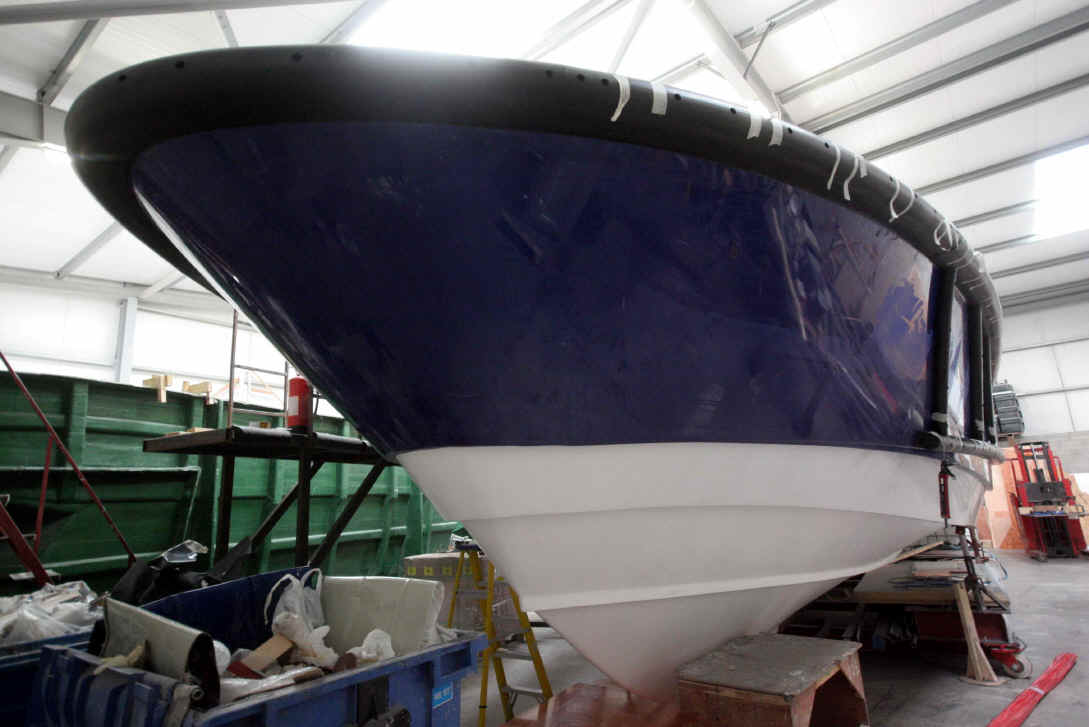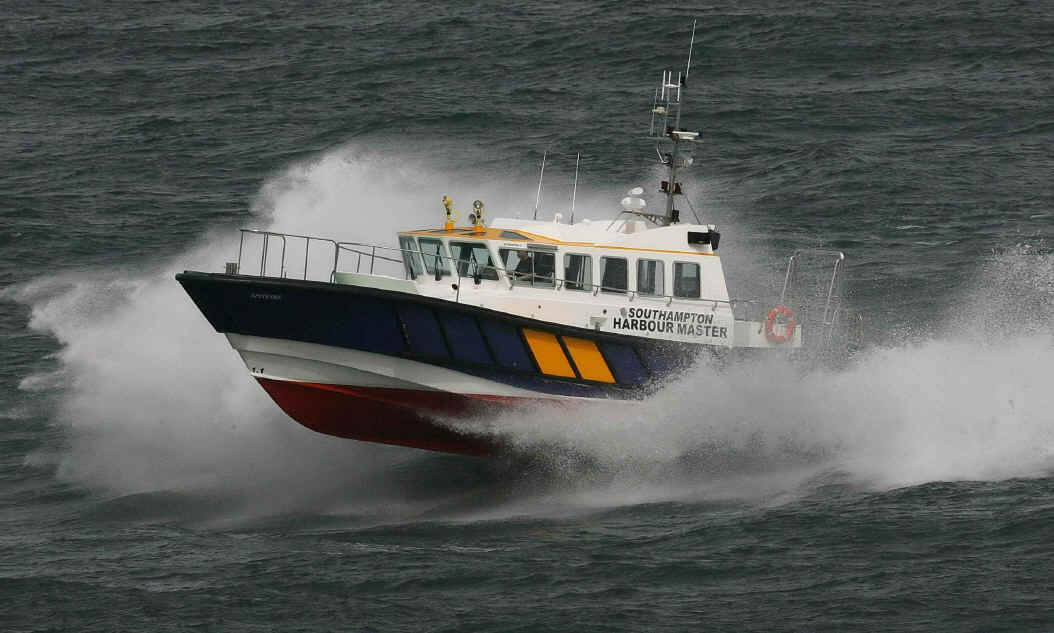
PORT OF SOUTHAMPTON'S 1st NEW PILOT / PATROL BOAT
'SPITFIRE' is launched
'SPITFIRE' The first of two Interceptor 55 'patrol' vessels built for VT Critical services to be supplied to the ABP Port of Southampton, one of the UK's largest and most prestigious ports. Looking sleek and graceful, and very striking with her dark blue hull and yellow flashes, with a 24.5kts operational speed she is exceptionally smooth and quiet with very low noise levels, she handles sweetly and is rock solid in the water . A full report will follow soon.
She will replace their current Halmatic FRC vessel. Spitfire is due to be delivered in June 2009 where she will be displayed at the Sea Work 2009 work boat show.
Her first rough weather sea trials are completed. She performed in an exemplary manor displaying superb sea keeping abilities. During the trials carried out in up to force 6 offshore and again in the tidal race off the lighthouse, during which we recorded a video and took some nice action shots. Throughout the video in steep 2m seas I was able to keep the hammer down, she was soft into head seas with no slamming and just fabulous down wind, surfing in full control and rock solid beam on, see the video here- Click here to see the video
Below some photos of the trials.

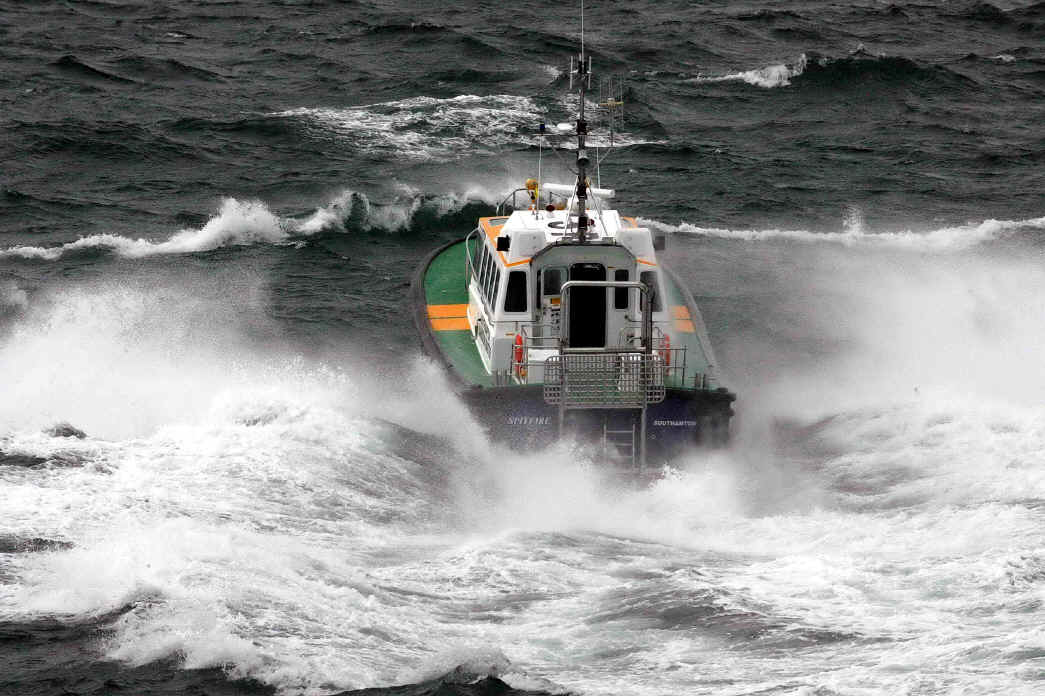
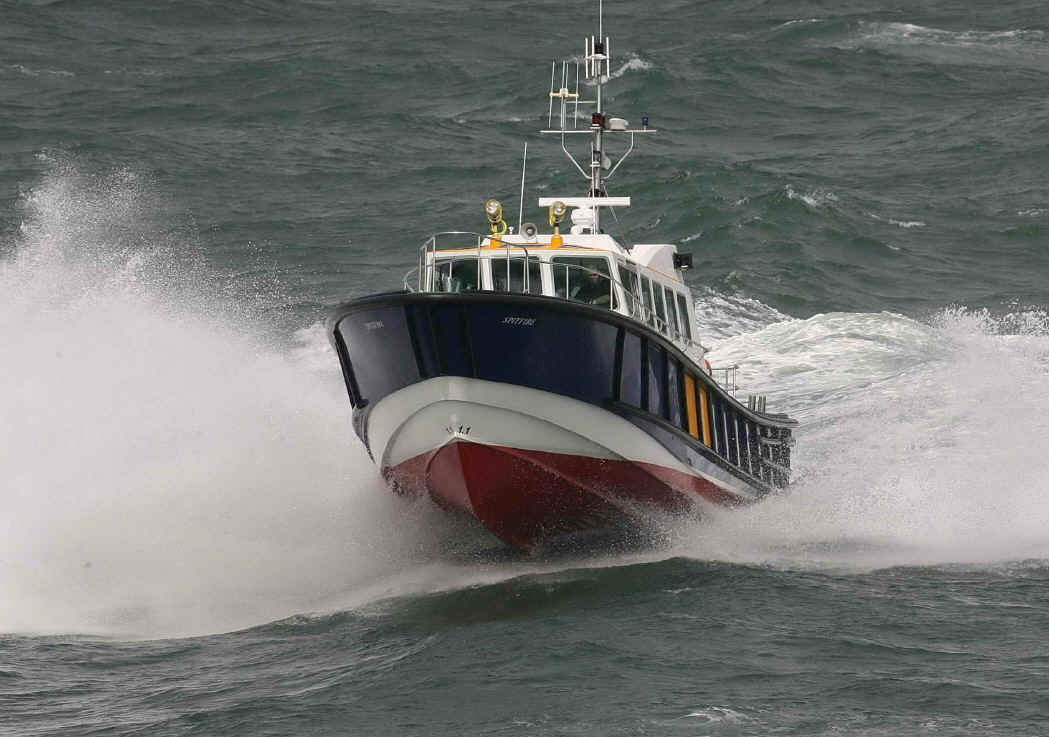
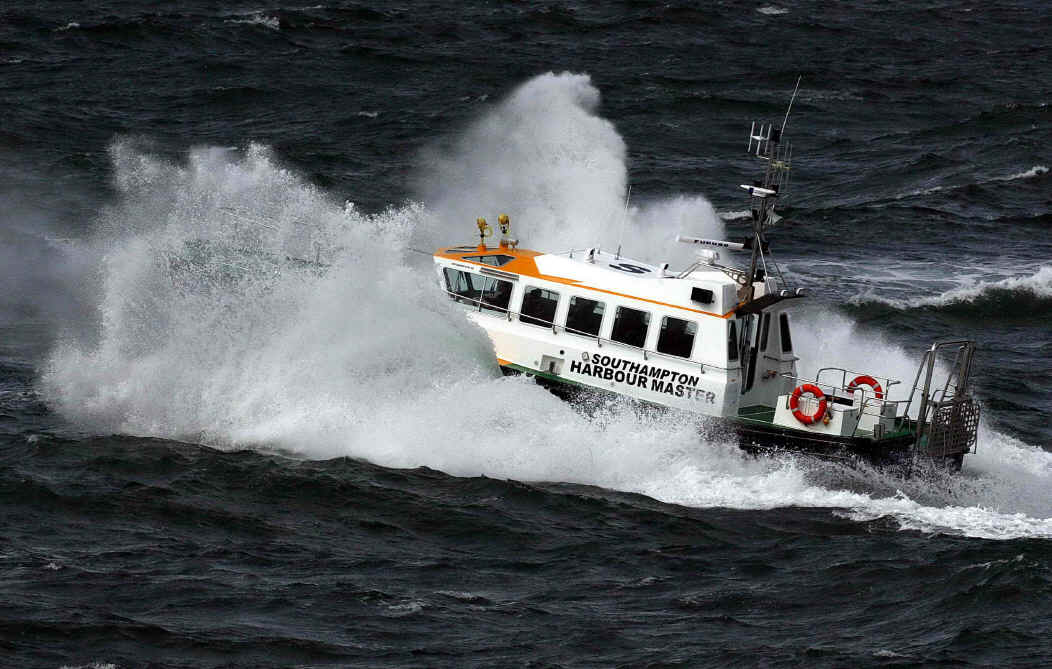
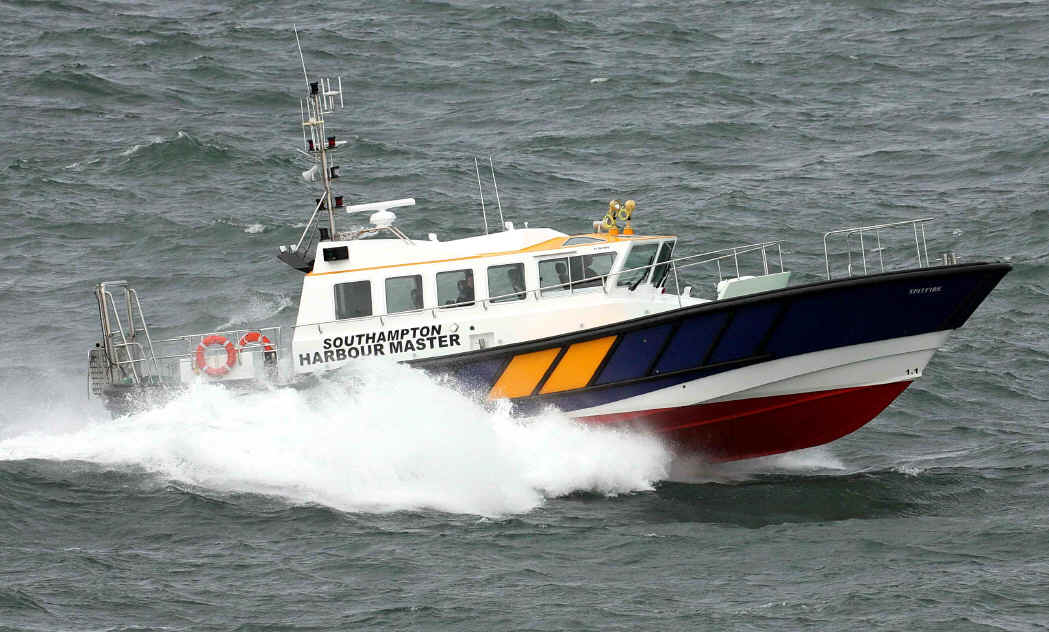
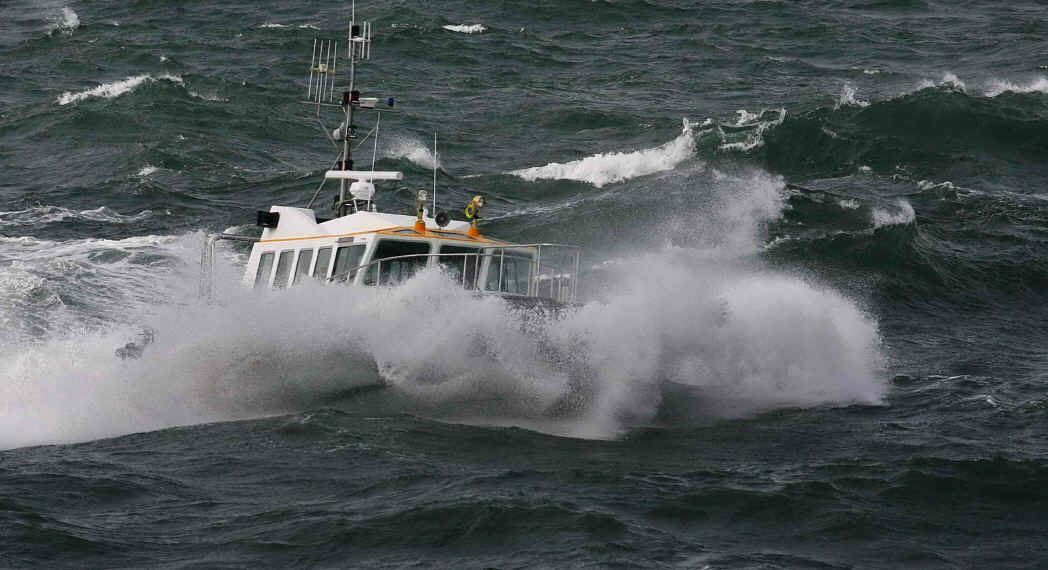
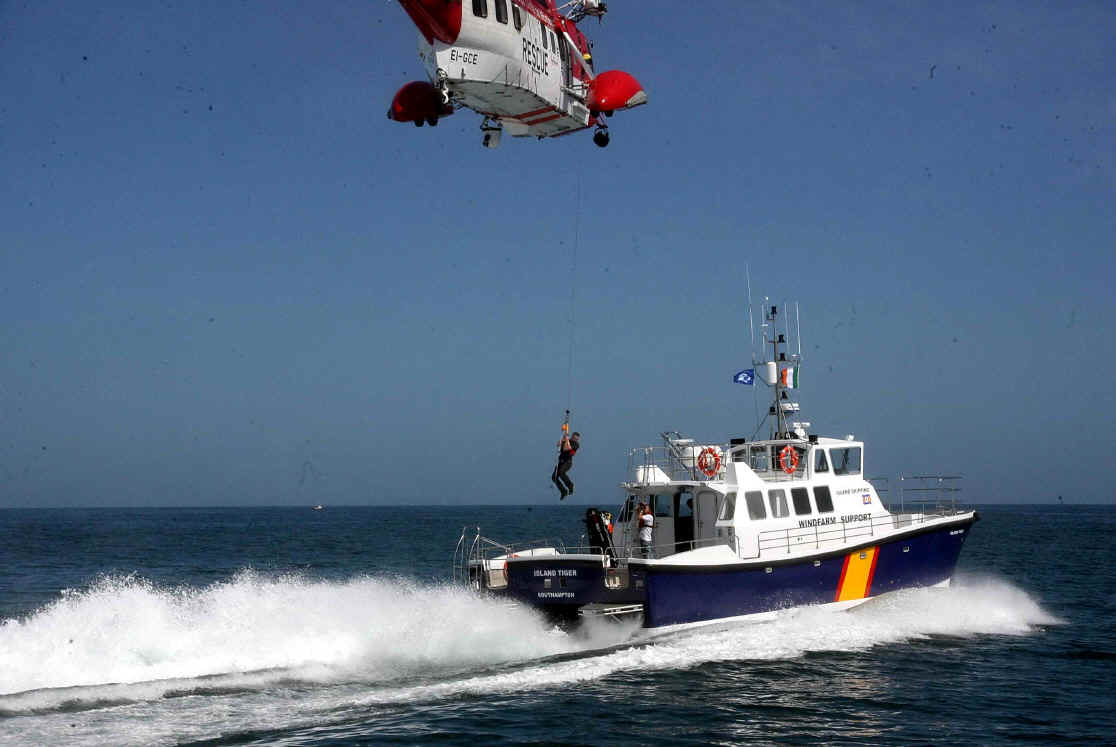
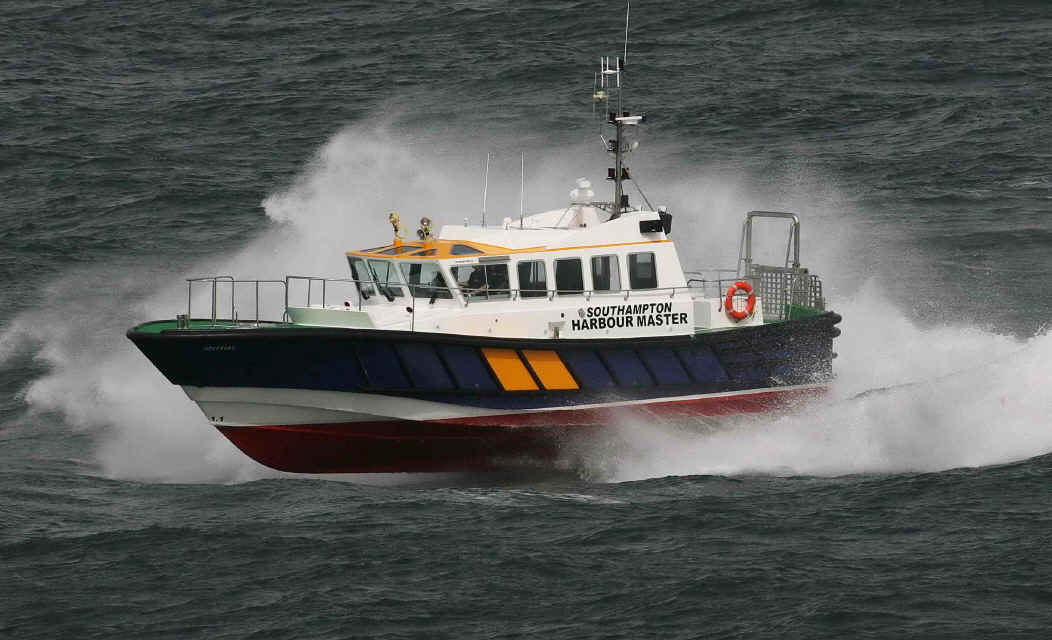
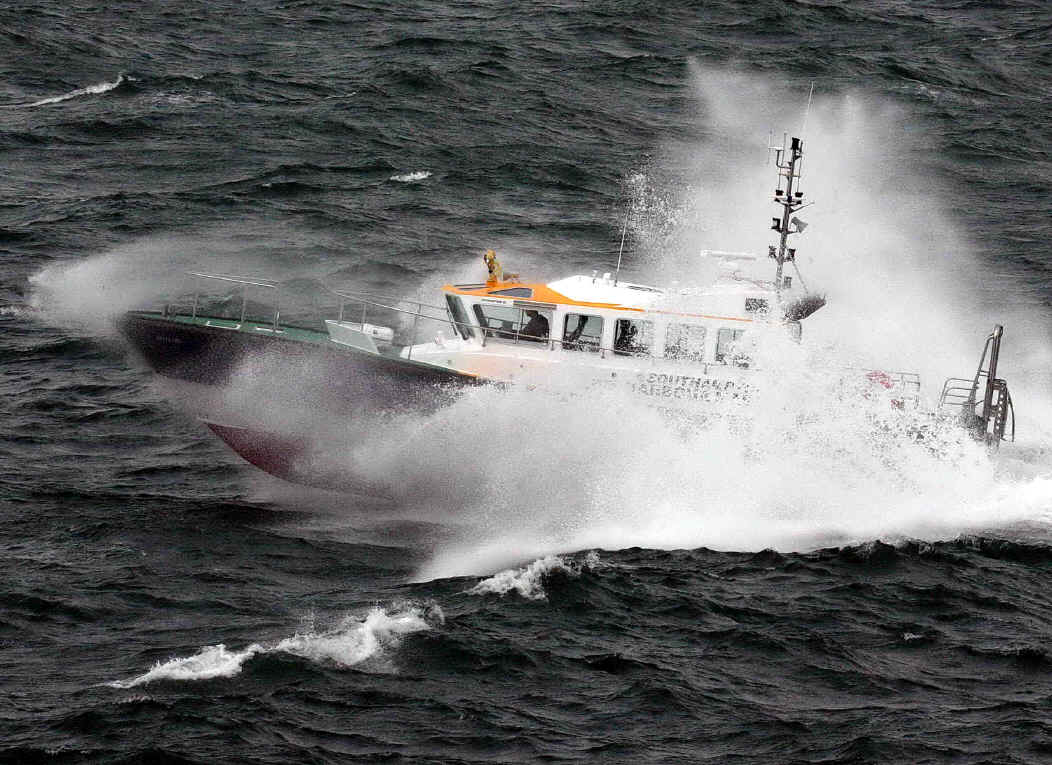
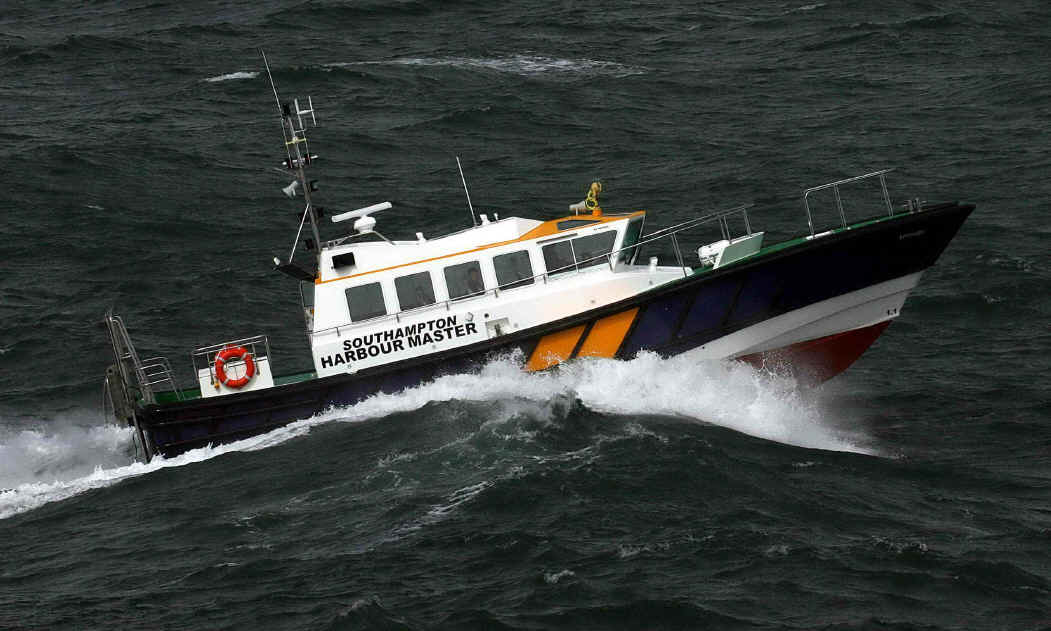
'SPITFIRE' Possesses very sleek and graceful lines, her gullwing sheerline is very distinctive and the colour scheme chosen by Southampton Port is very striking.
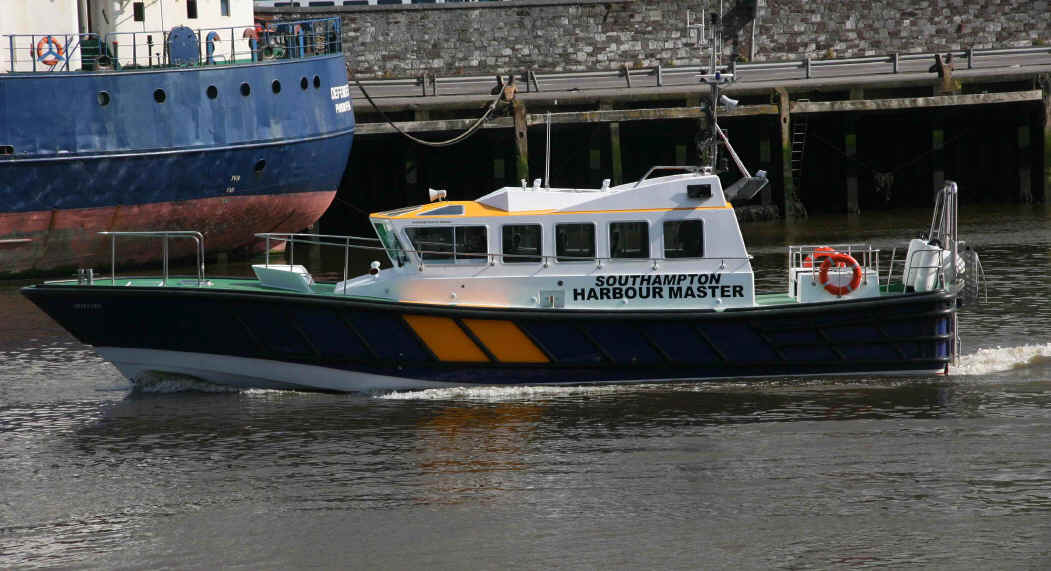
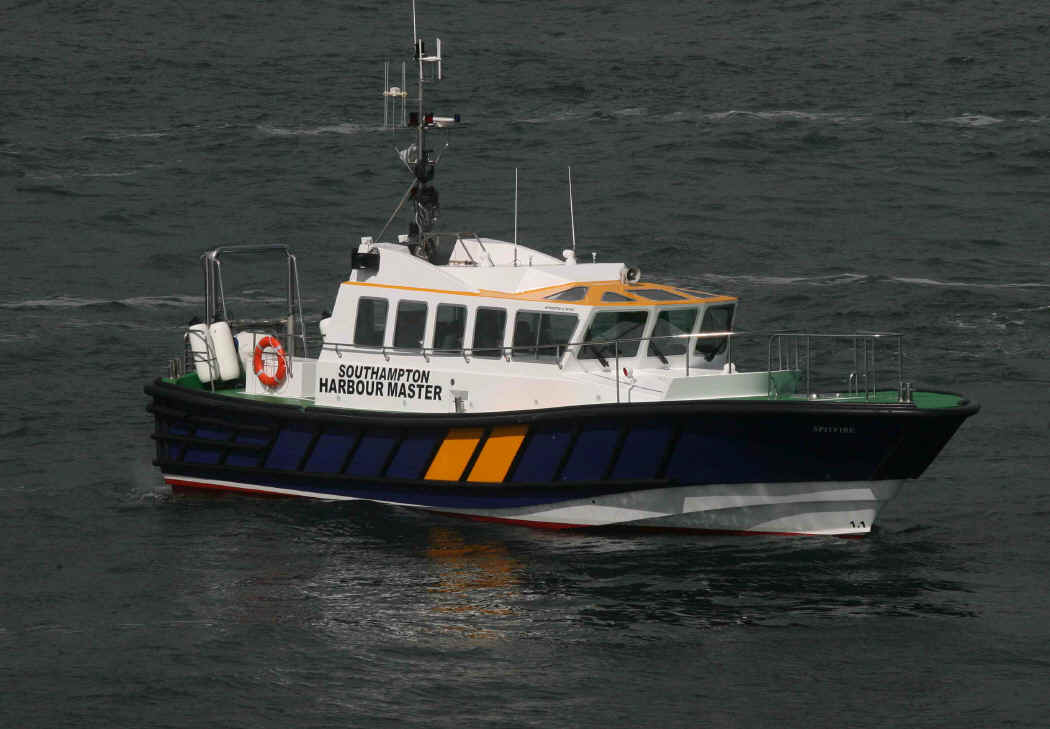
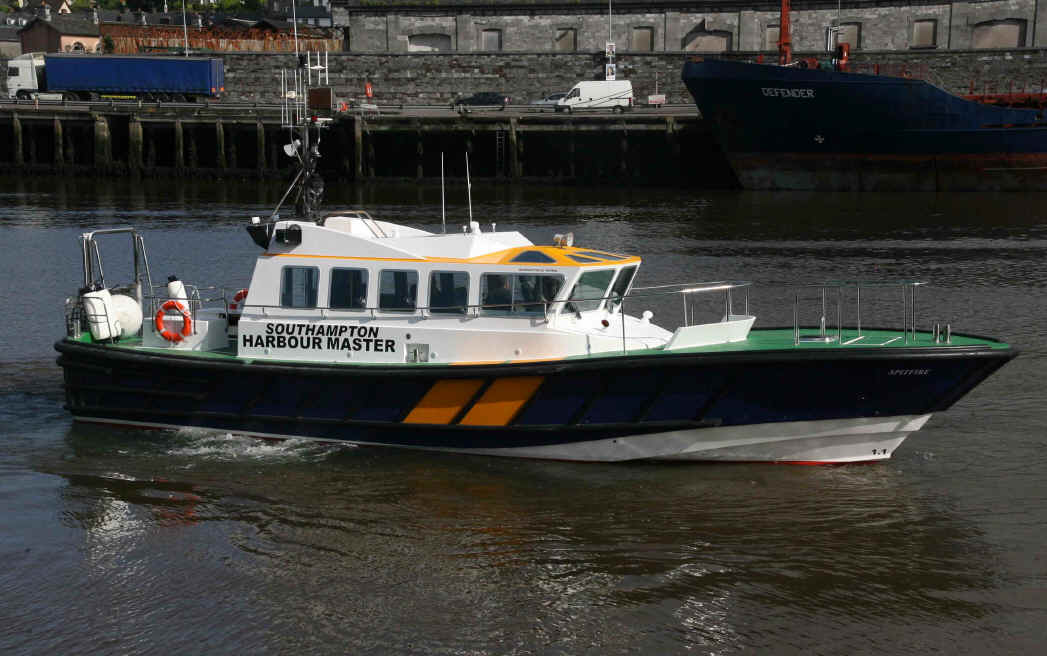
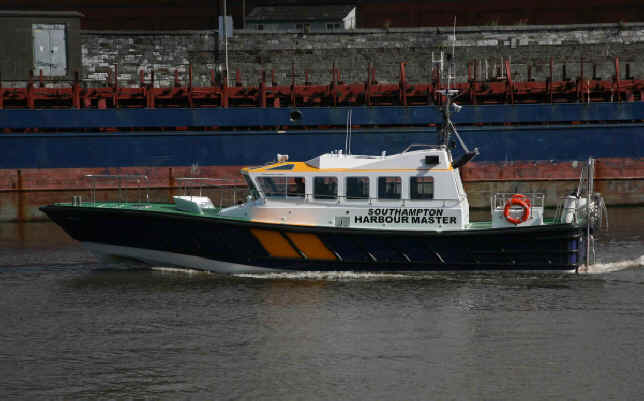 Above,
a reference photo of the Old patrol boat being replaced and the new vessel
Spitfire.
Above,
a reference photo of the Old patrol boat being replaced and the new vessel
Spitfire.
The two vessels will be used as patrol boats on Southampton waters and also as pilot boats alongside their existing Nelson 48/50.s As one of their primary roles will be providing 24hr cover on Southampton waters they are equipped with full live aboard 'hotel facilities' and are fitted out to a very high standard, featuring an 8,000btu air conditioning unit, a 6.5kw 1500rpm generator providing 240v throughout the vessel, full galley facilities with a 240v electric hob, microwave, hot and cold water. A large, separate heads with showering facilities, holding tank and pump out facilities. One of the advantages of the Interceptor design which has the engines mounted aft of the LCG is the spacious forward accommodation area providing twin bunk berths, a large seating area and table, full galley with an abundance of locker storage. A midships cabin provides 10 individual full height crew lockers and storage holds for specialized oil spill response equipment the the vessel will carry.
INTERIOR PHOTOS
Her main cabin features a new GRP moulding specially developed to suit the crews preference for a port side helm position, designed to encompass the helmsman with all navigational equipment, engine controls and instrumentation easily visible and falling quickly to hand providing a focused driving environment. She has a central access to the f/wd accommodation and a crew position featuring its own dedicated console to st/bd.
Behind the helm is a second larger dedicated navigation position with a large work top, angled instrument console and storage lockers allowing the navigator to monitor ship movements with a full paper chart assisting navigation throughout Southampton's busy waters. Opposite are two pilot seats for when the vessel is operating in pilotage duties. At the aft of the cabin she features a VIP area with a large, circular seating area with a table between to port and a second large 'L' shaped settee to st/bd, allowing comfortable seating for when she is used to carry dignitaries. The cabin has been finished correspondingly to a high standard with walnut effect wood laminate, a teak and holy cabin sole and corian effect work tops to provide a high class ambiance throughout.


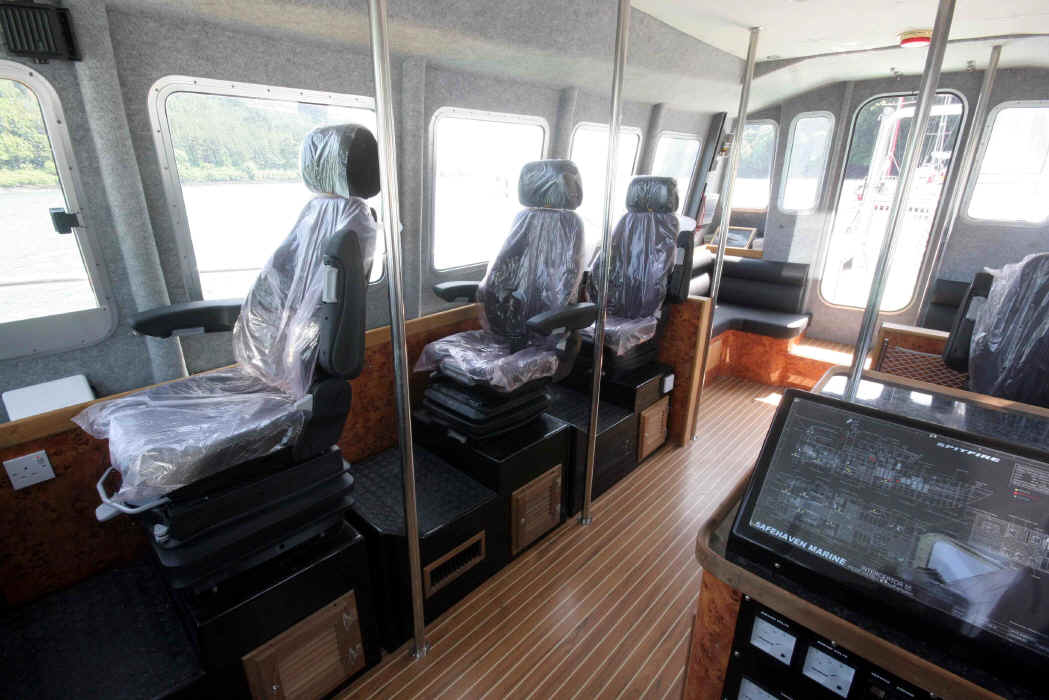
Her forecabin is especially nicely fitted out and provides a very warm and comfortable crew environment.

She is powered by Scania D16 engines through Twin Disc V drive 'Quick Shift' gearboxes which allow precise fingertip control of the vessel at slow maneuvering speeds, and allow creep speeds of les than 1kts, an advantage when operating in close quarters maneuvers. The engines rated at 650hp will give her a 24.5kt max speed. Scania D16 V8 engines were chose due to their compact nature and proven service record. Engine removal is facilitated via an large opening hatch on the aft deck which is capable of being opened for maintenance quickly without breaking a silkaflex seal, and will allow the engines to be lifted straight out of the craft without the need for further lengthwise maneuvering of the engines.
Spitfire has a separate 'tank' compartment forward of the engine compartment and this area holds the fuel filters, bilge manifold, batteries , electrical breakers, and isolators.
The vessel has a flush aft deck area which provides a seating area, this has been incorporated in to the engine ventilation boxes which also feature emergency engine room escape access on one module and storage locker space incorporated into the other module. One of the vessels roles will be the removal of floating flotsam such as trees, pallets and other debris that often finds its way into the channel and becomes a hazard for boat users. To facilitate this she is fitted with a large stainless steel basket that can be lowered down 400mm below the surface to recover flotsam. In addition the platform doubles as an MOB recovery system. The basket is hydraulically operated via a stainless steel ram and has a 250kg lifting capacity. The aft cockpit area allows the carrying of recovered objects to shore.
OLD IN BUILD PHOTOS
Her hull design is twin chine deep V, with a full length keel, this gives her a soft ride into head seas, tremendous stability running beam on in big seas with little rolling and great directional stability downwind. She will be fitted with a safehaven developed ride control Interceptor / trim tab system which lowers running trim to a wave splitting 1.5 degrees for fast head sea work allowing her to punch trough 2m seas at 25kts. Being able to adjust running trim keeps her sharp (55 degree deadrise) bow immersed into head seas and lifts the bow in following seas preventing her burying in to the back of waves. This, coupled with an exceptionally low VCG gives her exceptional levels of sea keeping.
Below is the first of two pilot / patrol boats we are building for the UK port of Southampton. Fendering is almost completed.
Below, the custom made helm console that we designed with the helm to port and a navigators station to s/bd, central access down via stairs to her fore and amidships cabin. The helm position features the same 'wrap around design' as used on the Portugal pilot boat, which proved to deliver a very focused and ergonomic driving position.
Below in her fore cabin is positioned a V seating arrangement which will have a table between, above each seat is a bunk berth / storage shelf. To st/bd the galley worktop is being formed., there will be storage lockers below, a microwave, 240v cooker hop and sink. Opposite f/wd is a large storage locker that can be used to store oil spill containment equipment and aft of this is the heads compartment.

The internal fit out is being carried out using Walnut laminate, creating a very warm and high class feel to the accommodation area.


Below, The midships cabin features 9 crew lockers. Aft is the tank space, then the engine compartment.

The fuel tanks are fitted and the compartment is finished, the hull sides are kept in a unpainted resin finish with the rest of the compartment flowcoated white.
The engine compartment has been sound and fireproofed, the panels have been designed in small sections that can be more easily removed for maintenance.
Her MOB and water recovery unit has been completed, shown here are the access ladder and steps.
Her heavy duty electro hydraulic trim tabs he been fitted, a strong stainless steel ram has been used that will prove tough and durable.
Above & below. she is fitted with seating modules incorporating engine room access and inlet engine room vent in one and storage locker and engine room exhaust fan and vent in the other. For light cargo versions, the vessel would not be fitted with these modules and the area kept clear and devoted to cargo carrying.
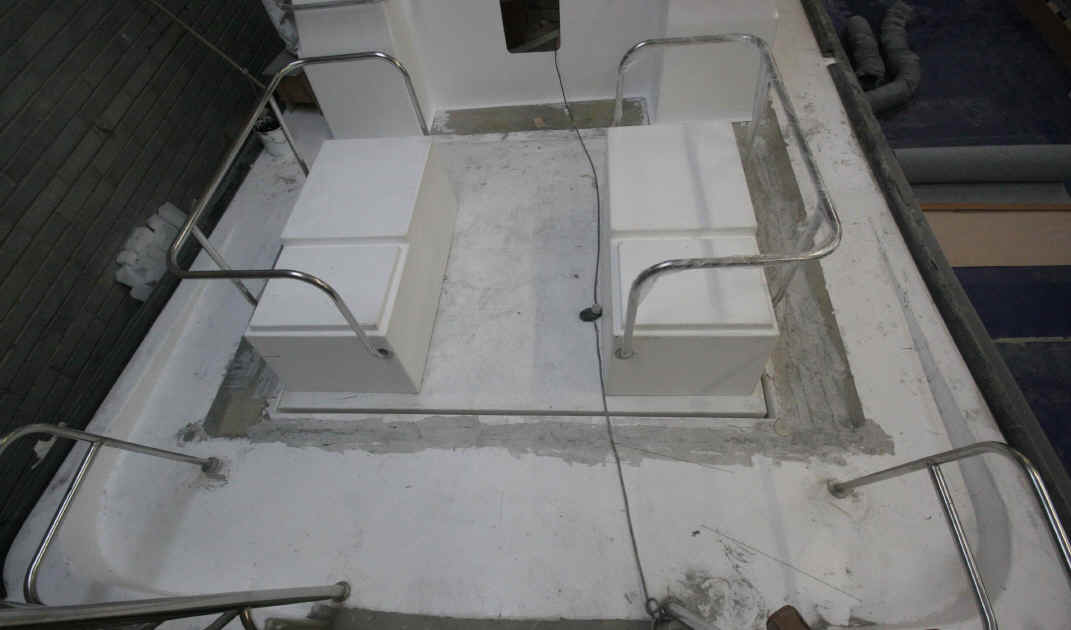
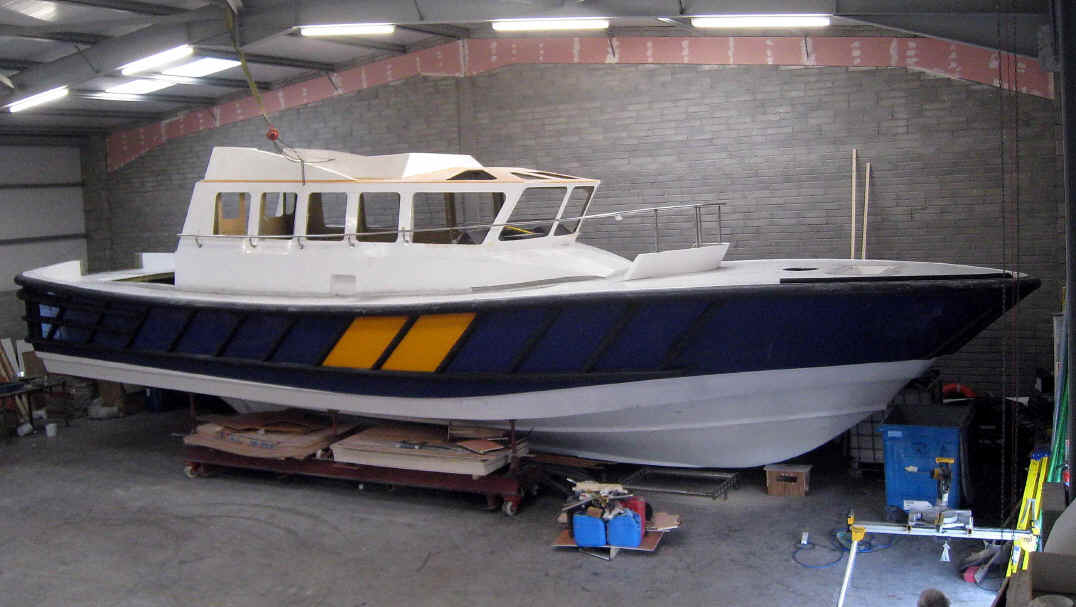
Southampton ports current vessels distinctive yellow side flashes are maintained.


Above and below. The wave deflector for protecting the screens and life raft from boarding seas.
Above and below, the substantial stern quarter protection.
